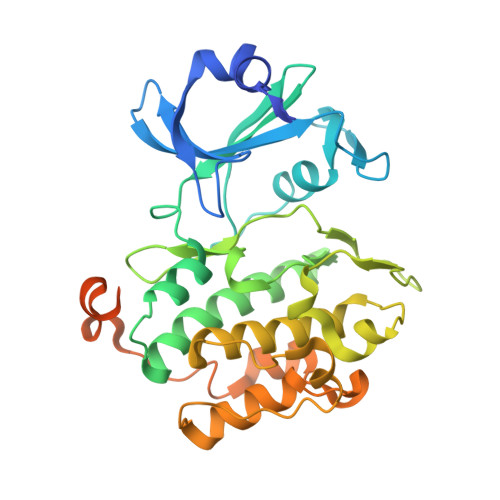Structural bases of PAS domain-regulated kinase (PASK) activation in the absence of activation loop phosphorylation.
Kikani, C.K., Antonysamy, S.A., Bonanno, J.B., Romero, R., Zhang, F.F., Russell, M., Gheyi, T., Iizuka, M., Emtage, S., Sauder, J.M., Turk, B.E., Burley, S.K., Rutter, J.(2010) J Biol Chem 285: 41034-41043
- PubMed: 20943661
- DOI: https://doi.org/10.1074/jbc.M110.157594
- Primary Citation of Related Structures:
3DLS - PubMed Abstract:
Per-Arnt-Sim (PAS) domain-containing protein kinase (PASK) is an evolutionary conserved protein kinase that coordinates cellular metabolism with metabolic demand in yeast and mammals. The molecular mechanisms underlying PASK regulation, however, remain unknown. Herein, we describe a crystal structure of the kinase domain of human PASK, which provides insights into the regulatory mechanisms governing catalysis. We show that the kinase domain adopts an active conformation and has catalytic activity in vivo and in vitro in the absence of activation loop phosphorylation. Using site-directed mutagenesis and structural comparison with active and inactive kinases, we identified several key structural features in PASK that enable activation loop phosphorylation-independent activity. Finally, we used combinatorial peptide library screening to determine that PASK prefers basic residues at the P-3 and P-5 positions in substrate peptides. Our results describe the key features of the PASK structure and how those features are important for PASK activity and substrate selection.
Organizational Affiliation:
Department of Biochemistry, University of Utah School of Medicine, Salt Lake City, Utah 84112-5650, USA.
















